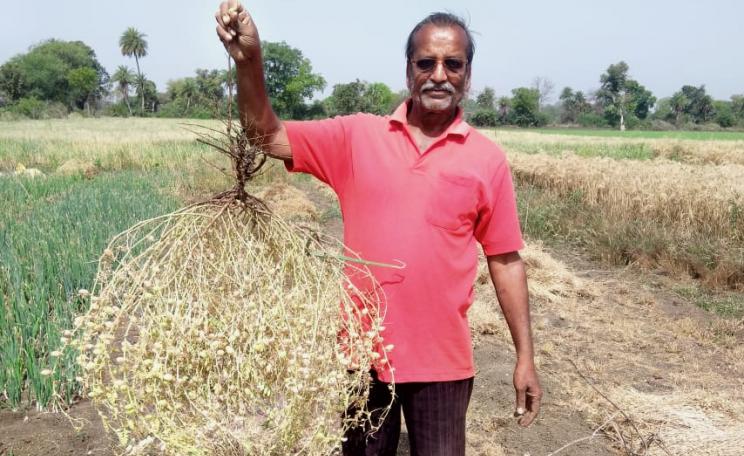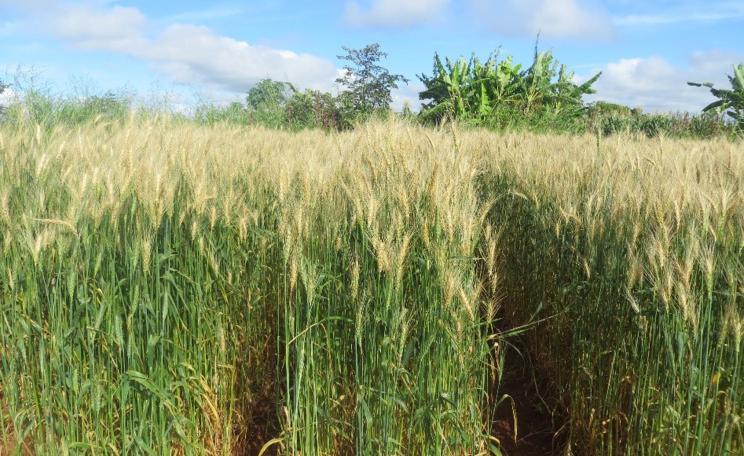It gave us the fishers and villagers of Sungai Batu a new fighting spirit to continue our struggle in advocating for our rights.
The artisanal fishers of the Malaysian Peninsula cautiously read the ocean tides and cast their nets in the early morning, hoping to catch a rich variety of crab, shrimp and fish. Behind them, high-rise condos, wooden cabins, and brick houses crowd the coastline.
The days of abundant fishing are long gone. The nets too often end up entangled with mud and fish bones. The coastal-fishing way of life hangs by a thin thread as development interests and tourism transform the local economy, dominating communities and the landscape alike.
This article has been published through the Ecologist Writers' Fund. We ask readers for donations to pay some authors £200 for their work. Please make a donation now. You can learn more about the fund, and make an application, on our website. Or take part in our online event, with Satish Kumar discussing economics and ecology.
Fishing has become ever more difficult for thousands of fishers here as massive land reclamation schemes such as Seri Tanjung Pinang (STP) and Penang South Islands (PSR) seek state approval.
Water-sports
“It takes a lot of patience to be a fisher. We can never be certain about our yield whenever and wherever we cast our nets,” said Tuan Haji Zakaria, a 65-year-old fisher living in the village of Sungai Batu, located in southern Penang Island. Tanjung Tokong, to the north, and Sungai Batu, to the south of the island, are among the coastal fishing villages affected by land reclamation and development.
“We keep moving whenever they develop," said Ishak Yusoff, a fisher and tour guide living in the coastal village of Tanjung Tokong. "They develop, we move. They develop more, we will have nowhere else to go.”
Penang Island is home to tropical rainforests and mangrove wetlands in the southwest, including endangered fauna, such as dusky langurs. George Town, its main city, was made a UNESCO World Heritage site in 2008. But in recent years an increasing number of high-rise luxurious condos and shopping malls have been built on the coastline. And local communities rarely benefit from such development.
Some of the fishers explain that the land reclamation projects have been at the expense of local sea life and at the cost of their own livelihoods, which are intertwined with the sea. Indeed, fishing is no longer their main source of livelihood. As they experience a drastic drop in daily yields, some are turning to ecotourism and running homestay programs for tourists.
The state government signed a legal agreement in 2017 allowing the Stonyhurst International School to construct a water-sports facility on state-owned land where the Tanjung Tokong villagers are currently residing.
It gave us the fishers and villagers of Sungai Batu a new fighting spirit to continue our struggle in advocating for our rights.
Families
Syahifah Hawa Zamzuri, 33, is one of Tanjung Tokong’s four female fishers. She describes her job as essential front-line work, supplying food for the entire state of Penang. “Our country is sick with development,” she told The Ecologist. “When they say ‘Penang Go Green’, that motto should include all of us.”
She explained the many concerns local fishers have about the planned partial demolition of Tanjung Tokong. “We cannot comprehend the fact that we are being sidelined,” she explained.
Zairil Khir Johari, a state assembly representative, stated that out of the 78 existing buildings, the developers will be “removing 12 in order to open up [the] public beach area.”
Johari emphasized the demolition will allow wider shared access to the beach for all and it is not exclusively for the school’s watersports facility usage. He told The Ecologist fishers are able to apply for temporary occupancy licenses and the state government will also offer those affected low-cost housing if they are interested.
However, Syahifah explained that the fishers she knew have applied three times in 2013, 2014, and 2020. The first two times the applications were refused and the appeals were rejected. They await a decision on the most recent appeal. Moreover, Syahifah remains concerned about the potential inadequate size of government housing units because some fishers have large families in Tanjung Tokong.
Unforeseen
Zakaria has been fishing off Penang Island for 46 years. Reflecting on the fishing way of life, he said: “Our income is irregular and dependent on our catch of the day.”
The Tanjung Tokong fishers built their homes on state-owned land. Zamzuri claims the fishers have moved from time to time in order to get closer access to the sea as ongoing developments have changed the nearby areas from beaches to mudflats.
The federal government revoked state approval for the Penang South Islands Project in September 2021 after local fishers submitted an appeal. The government agreed a second environmental impact assessment (EIA) was needed.
When The Ecologist asked how Zakaria felt about the temporary reprieve, he said: “It gave us the fishers and villagers of Sungai Batu a new fighting spirit to continue our struggle in advocating for our rights.”
However, in May 2022, the state government published the EIA for the Penang South Islands (PSR) Project. The EIA is now out for public viewing until Saturday, 18 June 2022. Environmental NGOs, including JEDI (Jaringan Ekologi dan Iklim), are actively raising concerns about the unforeseen consequences of land reclamation in Penang.
Architecture
The EIA will undergo technical review under the Department of Environment (DOE).Although projects requiring an EIA will undergo technical review from the DOE, it is ultimately up to the state government to approve particular projects even if it receives an EIA approval.
Zakaria remains heavily concerned about the PSR project affecting the livelihood of fishers. He calls the southern coastlines of Penang Island as “the last bastion” for finding abundant shrimp populations.
“The Sungai Batu fishing community is a prosperous place because we are able to fish close to the shores without casting our nets too far off.” Just like other local fishers in the area, Zakaria usually travels no more than 2km away from the southern coastlines.
In fact, environmental nonprofit Sahabat Alam estimated the value of fishing as $10.2 million US Dollars (42.09 million RM) in the southern part of Penang Island where Zakaria’s village is located.
Unfortunately, that could all change if the PSR project begins. Bjarke Ingels Group, an international architecture firm, designed the Penang South Islands project. The islands will be built by Gamuda, a Malaysian infrastructure company.
Turbidity
Firstly, 6.3 million cubic metres of mud will need to be dredged in order to make space for the three islands. After the dredging, about 207 million cubic metres of sand will be mined to build the islands.
The developers plan to acquire sand from neighbouring states Perak and Selangor. In total, about 4500 acres of land will be reclaimed as the developers create the three islands. The proposed number of sand sources have actually increased from four to eight locations since the government asked for the environmental impact report.
The ordering in which the islands will be reclaimed has changed since the first EIA (2019). This is due to a change in funding arrangements. In March 2021, the SRS Consortium is the project delivery partner which agreed to fund the land reclamation of Island A.
Evelyn Teh, an environmental researcher at the non-profit JEDI (Jaringan Ekologi dan Iklim), told The Ecologist: “If Island A is reclaimed first, then the fishers facing that coast will be directly affected first.
"But any impacts of sedimentation and turbidity coming from the reclamation will also affect the entire coastal waters due to the current flow conditions. The possibility of sediment plume coming from the reclamation will never be zero throughout its construction, especially when it is expected to take place for a significant amount of years until 2031."
A 2009 research article on Batam Island, Indonesia discovered sand dredging results in consequences such as water quality damage, sediment disturbance, coral reef and mangrove forest deterioration.
Biosphere
Dr Nurul Salmi, a senior lecturer at Universiti Sains Malaysia (USM), questioned the effectiveness of creating new forested wetlands as part of PSR’s development.
She told The Ecologist: “By destroying an intact, ecologically thriving and rich mangrove ecosystem such as that at PSR, [it] will leave cascading impacts and repercussions...The best mitigation is to not reclaim and destroy the mangroves."
Mangrove ecosystems act as habitats for rich shrimp populations. Dr Salmi elaborated on how “newly forested areas at PSR will not act or create the same environment as the original. In other words, the replanting will not bring back or retain the fauna populations including the shrimps.”
The developers also now plan to dispose of dredged materials just 33km away from Muka Head, which falls under the UNESCO-designated biosphere reserve and has a lighthouse located inside the Penang National Park.
The Seri Tanjung Pinang (STP) is a two-phased project with the goal of reclaiming 1000 acres in the northern coastlines of Penang Island. Its second phase of land reclamation started in 2016.
Haze
The Tanjung Tokong fishers have already made longer trips further away from their homes as ongoing land reclamation happens. Syahifah told The Ecologist: “The fishers have no choice but to go out further to sea in order to cast our nets wider.
“We also experience increased gas costs for our boats to travel further and it takes longer to fish. As fishers, we have to cast our nets further and further away to get a decent yield.”
She added: “Everything has totally changed. We had to Google what a mudflat is, what a coral is. We have to do more trial and error when we cast our nets. If it’s mud, we have to cast nets in another place.”
Syahifah explains the fishers suffer from physical fatigue, which they fear is being made worse because of haze pollution and severe storms. These in turn are being impacted by climate breakdown.
A 2021 study in Malaysia’s Klang valley reported haze led to higher usage of medical facilities and worsened episodes of respiratory diseases such as asthma. Another research article published in 2017 discussed how land reclamation disrupts marine food chains in Penang.
Sea-life
It remains uncertain to what extent the Middle Bank seagrass beds in northern Penang Island have been affected by land reclamation.
These seagrass beds act as feeding and breeding grounds for marine organisms such as cockles, octopuses, and sea cucumbers. IUCN Red List vulnerable animals such as dugongs and horseshoe crabs are also found at the Middle Bank.
In a 2012 case study, it was reported sand dredging caused permanent loss of benthos habitat. The same study also found that increased water turbidity occurred due to the presence of suspended solids facilitated by dredging.
The state of Penang is not alone in approving such expansive development projects. In fact, the state governments of Malacca and Johor have either approved or have ongoing land reclamation projects such as Maharani Gateway, which still needs approval; Melaka Gateway, currently on hold, and Forest City, which is now under construction.
The fishers’ difficulties are being exacerbated by a related national crisis. Malaysia is facing an exponential increase in fish prices due to the increasing challenges for fishers across the country. Mackerel, a staple, has increased fourfold - from RM 3-4 to RM 12-14 per kilogram.
During the COVID-19 pandemic, “all reclamation work came to a temporary halt. For almost two years, we noticed stable and ongoing sea-life. Fishers were able to get a decent catch on a regular basis,” Syahifah observed.
This Author
Kymberley Chu is a writer focusing on the environmental histories of dispossession. Previously, she interned at the Pulitzer Center on Crisis Reporting and worked as a freelance journalist in Malaysia. This year, she will begin her Anthropology Ph.D. at Princeton University.
This article has been published through the Ecologist Writers' Fund. We ask readers for donations to pay some authors £200 for their work. Please make a donation now. You can learn more about the fund, and make an application, on our website. This article was also supported by the Pulitzer Center on Crisis Reporting.




